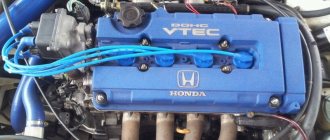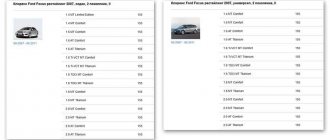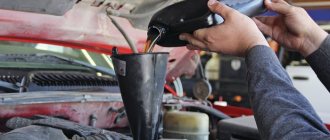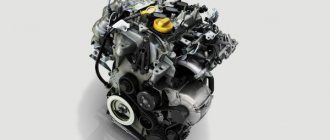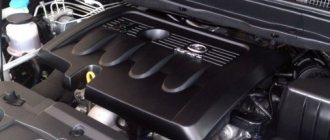The Kia Optima is a 4-door mid-size sedan from the South Korean manufacturer Kia Motors Corporation. The car began production in 2000. The name Optima was used primarily for the 1st generation model. Since 2002, the car has been sold in Europe and Canada under the designation Kia Magentis.
Since 2005, the model has been sold worldwide under the same name, with the exception of the USA and Malaysia. There she retained the traditional name – Optima. In the South Korean and Chinese market segments, the car is sold under the designation Kia Lotze & Kia K5. Starting from the end of 2015, the 4th generation of the model went on sale. A modification of the 5-door station wagon was added to the 4-door sedan.
Initially (in the 1st generation) the car was produced as a converted version of the Hyundai Sonata. The differences were only in the details of design and equipment. In 2002, its updated luxury South Korean version was released. In the second generation, the car was based on a new, global platform, designated “MG”. An updated version was released in 2008.
Since 2010, the 3rd generation of the model is based on the same platform as the Hyundai i40. In the same generation, hybrid and turbocharged versions were released together. At the end of 2015, the manufacturer introduced the 4th generation of the model with a completely new design and functionality. The car has the same base as the Hyundai Sonata.
What engines were installed on different generations of cars?
| Characteristics | D4EA | G4KA | G4KD | G6EA | G4KF | G4KJ |
| Volume, cm 3 | 1990 | 1998 | 1997 | 2657 | 1997 (turbine) | 2360 |
| Maximum power, l. With. | 125-150 | 146-155 | 146-167 | 190-194 | 214-249 | 181-189 |
| Maximum torque, N*m (kg*m) at rpm. | 290 (29)/2000 – 351 (36)/2500 | 190 (19)/4249 – 199 (20)/4599 | 191 (19)/4599 – 197 (20)/4599 | 246 (25)/4000 – 251 (26)/4500 | 301 (31)/1901 – 374 (38)/4499 | 232 (24)/4000 – 242 (25)/4000 |
| Type of fuel | Diesel | Gasoline, AI-95 | Gasoline, AI-92, AI-95. | Gasoline AI-95 | Gasoline, AI-95. | Gasoline AI-95 |
| Consumption per 100 km | 7-8 (4 for turbo) | 7,7-8,5 | 08.12.2018 | 09.10.2018 | 8,5-10,2 | 8.5 |
| Motor type | In-line, 4 cylinders, 16 valves. | In-line, 4 cylinders, 16 valves. | In-line, 4 cylinders, 16 valves. | V-shaped, 6 cylinders. | In-line, 4 cylinders. | In-line, 4 cylinders. |
| Carbon dioxide emissions, g/km | 150 | 167-199 | ||||
| Compression ratio | 17 (for turbocharged version) | |||||
| Auto generation | Second | Second, restyling 2009 | Second, third, fourth. Restyling of the second and third. | Second generation, restyling 2009 | Fourth sedan 2021 | Fourth sedan 2021 Restyling of the third generation 2014 |
What oil to use for the Kia Optima engine
Original
Owners of Kia Optima cars are recommended to use the branded lubricant Hyundai/Kia Premium LF Gasoline 5W-20 (art 0510000451 or 0510000151). In addition, the SAE viscosity index, which is selected based on climatic conditions, is important. For example, mainly in summer a viscosity of 20W-20 or 25W-50 is required. In winter, 0W-30, 0W-40 or 5W-30 is recommended, and for all-season use, 10W-40, 10W-30 or 5W-40 is suitable.
Also read: Motor oil for BMW F20 engine
Unoriginal
Owners of Kia Optima cars prefer proven motor oils of well-known brands, among which are Kixx, Shell, Castrol, Liqui Moly, Motul, Mobil, Valvoline, etc. In addition, when choosing a suitable product, you still need to pay attention to the API approval, which is selected in depending on the year of manufacture of the car, as well as the type of engine. Below are compatible oil parameters for Optima based on the above criteria.
- First generation: for petrol Opima models 2000. Suitable all-season oil on a semi-synthetic basis, with parameters 10W-30 and API-SJ. For 2006 cars, semi-synthetic API-SJ is recommended. Diesel engines are filled with API-CF and CH-4 for 2000 and 2006, respectively.
- Second generation: Optima gasoline engines 2006. fueled with all-season semi-synthetic 15W-40 with API-SJ approval. For sedans in 2010, you can opt for semi-synthetic API-SL.
- Third generation: for petrol versions of Optima 2011. All-season semi-synthetic 5W-40 with API-SM approval is recommended. At the same time, pure synthetics API-SM are suitable for 2014 cars.
- Fourth generation: gasoline engines of Optima sedans released in 2021 are filled with 10W-50 all-season synthetics with API-SN approval. For cars 2021 and later, API-SN synthetics are also suitable.
Below are the best options for analogue motor oils for the Kia Optima.
- Total Quartz 9000 Energy HKS G-310 5W-30 art 175393
- Total Quartz INEO MC3 5W-30 art 157103
- Motul Eco Clean 5W-30 art 101545
- Liqui Moly Leichtlauf Special F 5W-30 art 8064.
The most popular engines
Each generation of the Kia Optima model has its own characteristics, including the installed power unit. Let's consider the features of those modifications that have become most widespread.
First generation
In the first generation, the car was called Magentis MS. Its production belonged to two companies - Hyundai and Kia. The car was equipped with three engine modifications - a 4-cylinder 2-liter engine with a power of 134 hp. s., V-shaped 6-cylinder 2.5-liter with a power of 167 hp. With. and V-shaped with six cylinders 2.6 liters with a capacity of 185 hp. With.
The most popular option of them was the 2-liter unit.
The main reason for this is efficiency, sufficient power, ease of maintenance and a reliable fuel injection control system. 6-cylinder engines, although superior in power and torque, were significantly inferior in dynamics and fuel consumption.
In fact they would fit 2 ton vehicles.
Speaking about practical characteristics, it can be noted that all 3 engine modifications were distinguished by their long service life and maintainability. High quality materials, simplicity of design and execution make such units operate without interference for more than hundreds of thousands of kilometers.
Second generation
In the second generation, the Kia Optima was supplemented with a new diesel unit. With a volume of 2 liters it produces 140 liters. With. with a torque of 1800-2500 Nm/rev. min. The new engine has proven itself to be a worthy competitor to gasoline internal combustion engines. This primarily affected such important parameters as traction force and efficiency.
However, despite the survivability and good performance characteristics, engines of this series force the owners of the cars on which they are installed to pay more attention to maintenance. This includes more frequent replacement of consumables and high requirements for the quality of fuels and lubricants.
A significant problem that arose when operating such a unit on the Kia Optima was caused by particulate filters.
They eventually become clogged, and the only thing that can save the situation is to remove them completely. Another difficulty lies in the fact that reinstallation of the software control is required. However, this procedure has its advantages. With the right approach, you can increase engine power by 35-45 hp. With.
Third generation
The third-generation Kia Optima ICE series included a predominantly naturally aspirated unit and turbo engines with a volume of 2 to 2.4 liters, as well as a turbocharged 1.7-liter diesel engine. Theta 2 power plants from the manufacturer Mitsubishi include 4 cylinders with an aluminum block, have an injection system, 4 valves per cylinder, run on AI-95 gasoline fuel and are characterized by the Euro-4 standard.
The manufacturer provides a 250 thousand km guarantee for its motors. Compared to previous versions, the new engines have an improved gas distribution system - CVVT, improved attachments and software.
The most successful modification from this series was the 2-liter unit. Thanks to good traction, relatively low operating noise and high reliability, it began to be installed not only on Kia Optima, but also on models from other manufacturers - Hyundai, Chrysler, Dodge, Mitsubishi, Jeep.
The 2-liter unit at 6500 rpm develops power up to 165 hp. s., although for the Russian market it is cut to 150 liters. With. The engine lends itself well to tuning. With proper flashing, the engine potential develops over 190 hp. With. The 2.4-liter engine has similar characteristics and popularity.
Their only design drawback is the absence of hydraulic compensators. Therefore, every 100 thousand km of travel it is necessary to adjust the valves.
Fourth generation
In the fourth generation (modern version), the Kia Optima is equipped with a new range of internal combustion engines. These are primarily gasoline units:
- 0 MPI. Has a power of 151 hp. With. at 4800 rpm min. It is equipped with a manual and automatic transmission. The engine is installed on the Classic (manual) and Comfort, Luxe, Prestige (all 3 automatic) configurations. Fuel consumption does not exceed 8 liters per 100 km.
- 4 GDI. Has a power of 189 hp. With. at 4000 rpm min. Equipped with a direct fuel injection system. The unit is installed on the Prestige, Luxe and GT-line configurations. Consumes no more than 8.5 liters of fuel per 100 km.
- 0 T-GDI turbocharged. Develops about 250 hp. With. with a torque of about 350 Nm. Installed on GT trim level. The car consumes about 8.5 liters of fuel per 100 km. This is the most powerful engine modification available today for the Kia Optima. A car equipped with such an internal combustion engine takes on a sporty character. Thus, acceleration to 100 km/h is carried out in just 7.5 seconds, and in the tuned version - in 5 seconds!
The entire line of engines for the Kia Optima meets high quality and reliability requirements. The units from the manufacturer Mitsubishi were taken as a basis. Having preserved the base and supplemented them with the latest developments, the company has released a number of different internal combustion engines.
In general, the engines have few disadvantages. They run on gasoline fuel AI - 92/95. They are distinguished by good dynamics, strength and efficiency. The natural price to pay for such characteristics is timely maintenance and selection of high-quality consumables, fuel and, especially, engine oil.
Choosing engine oil
A competent choice of motor oil will allow the car engine to function for hundreds of thousands of kilometers without serious problems. And on the contrary, pouring even high-quality oil, but not corresponding to the operating conditions and characteristics of the engine, can quickly disable the latter.
Therefore, it is so important to follow the following minimum set of rules when choosing engine oil for the Kia Optima:
- SAE viscosity index. Characterizes the uniform distribution of oil over the inner surface of the engine. The higher its value, the higher the viscosity of the oil and the greater the resistance to temperature overload. Affects the warm-up and cold start time parameters.
- API and ACEA certificates. Determine fuel consumption, catalyst durability, noise and vibration levels.
- Compliance with ambient temperature. Some types of oils are designed for hot weather, others for winter.
- Number of revolutions.
There is no universal motor oil for the Kia Optima. Therefore, every car owner must take into account operating conditions and, in accordance with them, select oil according to certain primary criteria - according to the time of year, degree of engine wear, fuel economy, etc.
Third generation Optima engines (2010-2015)
This modification of the Korean sedan was produced at factories in South Korea, the USA, Kazakhstan, Russia, Malaysia and China. The Kia Optima TF engine line was the Theta 2 family, which included several naturally aspirated and turbo engines ranging from 2 to 2.4 liters. and a 1.7 liter CRDi turbo diesel. Petrol variants replaced the Theta series, which consisted of two engines 2.0 G4KA and 2.4 G4KC and was developed by Mitsubishi specialists. The new Theta 2 engines are four-cylinder in-line injection units with 4 valves per cylinder, an aluminum cylinder block, AI-95 fuel, Euro 4 environmental class. The service life of such engines, according to the manufacturer, is 250 thousand kilometers. They have many deep modifications regarding the CVVT gas distribution system, intake and exhaust receivers, attachments, software and more.
Turbocharged engine Kia Optima 2010-2015
The main modification with a volume of 2.0 turned out to be quite successful; good traction, low noise levels and reliability made it possible to widely use the engine on many models:
- Kia
- Hyundai
- Mitsubishi
- Dodge
- Jeep
- Chrysler
Power was 150-165 hp. /6500 rpm Torque - 196 Nm/4800 rpm. This option was soon joined by a 2.4 liter engine. and a power of 178 hp. as well as 2.4 GDI with a power of 200 hp. The two-liter G4KD / 4B11 engine lends itself well to tuning. In Russia, its power is reduced to 150 hp. to reduce transport tax, so with the help of firmware it can be easily restored to the previous level. In general, the tuning potential for this engine is more than 200 hp.
One of the features is the absence of hydraulic compensators, so after 90 - 100 thousand kilometers the Kia valves may need to be adjusted.
Which engine is better to choose a car with?
When purchasing a Kia Optima, the future car owner is faced with the question of which engine option to choose. We are talking, first of all, about the car currently being produced, that is, the 4th generation. There are three versions available for domestic consumers to choose from – 2-, 2.4-liter and turbo version.
Here the buyer needs to take into account the conditions under which he plans to operate his future car, how much money he is willing to pay, including tax fees per liter. pp., how much he plans to spend on fuel refueling and consumables.
For example, a turbocharged modification is suitable for those who are accustomed to sporty driving, as well as those who plan to subject the engine to further improvements, bringing the unit to record dynamics in its segment - acceleration to 100 km/h in 5 seconds.
Otherwise, if the driver is not used to it or he simply has nowhere to learn dynamic driving, the first two versions are suitable. At the same time, the 2-liter option is the most economical and has sufficient power for moving around the city. For those who are going on long trips or business trips, a more powerful and larger 2.4-liter engine is better suited.
If we talk about engines of earlier versions, then everything is decided by the preferences of the car owner himself. Diesel units have always been considered the most economical. However, their level of environmental friendliness is always lower than that of gasoline ones. This is especially true for those who are planning to travel along European roads. In addition, the operating parameters of a diesel engine are significantly affected by the level and quality of fuel, which in Russian conditions is not always the best.
Replacing the KIA Optima timing chain in Moscow
Replacing the KIA Optima timing chain
All modern cars equipped with an internal combustion engine require a timing belt or chain. The timing chain or belt does the same job of synchronizing the various moving parts of an internal combustion engine so that each cylinder burns at the perfect time and in the right sequence. Some Kia models have a timing chain and some have a belt depending on the design. Kia Rio, Picanto, Cerato, Sorento, Sedona, Venga, Optima or Sportage vehicles are equipped with a chain that is a critical component for engine operation. If the timing chain becomes faulty, there are a number of signs that indicate damage. Ignoring these signs will eventually cause the timing chain to fail and moving parts may begin to collide with each other. In this case, parts such as valves, cylinder head, pistons and piston rods may be damaged.
Why do you need a timing chain?
In the KIA Optima gas distribution mechanism, one part is directly connected to the other. The timing belt or chain is a link involved in transmitting torque from the crankshaft to the camshaft. The chain drive connects these elements directly or by connecting the camshafts to each other.
Do not forget that permanent monitoring of the condition of the timing chain and regular change of tensioners and “precipitators” contribute to the proper operation of the car, its power and are carried out during scheduled maintenance.
Specifics of chain replacement
A distinctive feature of past generations of cars from new ones is the use of a chain with roller links for Torque transmission in past generations of cars occurred through the use of a chain with roller links, unlike new models, which made the chain quite strong and, one might say, durable. Of course, over time, the main goal of manufacturers became efficiency in the design and subsequent production of cars. Due to this, a tendency has emerged to reduce the cost of the internal mechanisms of the car: the durable chain has been replaced by a more budget-friendly, but lower-quality timing belt.
The Kia Optima timing chain has a list of characteristics that distinguish it from a belt:
- The strength of the chain affects its longer service life than that of belt-driven engines;
- Since the chain is metal and quite heavy compared to the belt, its sagging will be difficult to miss due to the characteristic noise, which indicates the first signs of a malfunction of the gas distribution mechanism;
- A small disadvantage of using a chain is the presence of consumable parts - dampers and tensioners, which require regular replacement;
- The main disadvantage of the timing chain is its inaccessible location: that is, it is not possible to independently assess the condition of the chain without professional equipment.
Types of faults
- Lateral runout of the timing chain, which appears due to stretching of the links. Only a qualified specialist can assess the level of stretching;
- When using a car for a long time, the same stretching of the chain is observed, which is called backlash. Backlash can lead to complete failure of the gas distribution mechanism;
- The most serious malfunction for the engine is an open circuit, which is rare, but can still happen. In this case, the connection between the crankshaft and the camshaft is disrupted, in which any of the valves of the gas distribution mechanism will open. An upward moving piston may hit the valve, which will lead to its deformation and then subsequent engine repairs are inevitable. Experts note that such a break does not happen overnight: a change in its power, gasoline consumption, etc. will indicate a malfunction of the car.
As a preventative measure for timing chain problems, experts recommend undergoing regular maintenance and troubleshooting the chain.
Causes of wear
- Extreme conditions. Constant driving on dirt roads, trailers, high speed - all this helps reduce the wear resistance of the chain;
- The use of low-quality synthetic oil, which does not have special detergent additives, shortens the life of the timing chain;
- Irregular checking and replacement of consumable parts such as tensioners and dampers leads to chain stretching and link jumping.
Signs of a faulty circuit
When a chain begins to lose integrity, the most common result is stretching, which causes a slight loss of timing. If the timing chain has more wear, more obvious warning signs will become more noticeable. Here are the common signs of a faulty timing chain, ranging from slight stretching to complete failure:
- Engine ticking sound;
- Rough idle;
- Loss of power;
- Engine rattling;
- Stopping a car while moving.
If you notice one or more signs of a timing chain malfunction, then you should not ignore it - it is better to immediately contact a technical center for an inspection.
How often is the timing chain replaced?
The frequency of replacing the chain is individual and is related to the driving style and operation of the KIA Optima. For example, during extreme driving, it is recommended to change the chain as it becomes loose.
With standard and gentle operation, the timing chain is replaced as planned, that is, after 100 - 150,000 kilometers.
The specialists of our technical center will troubleshoot the Kia Optima timing chain, assess play and lateral runout, professionally replace and adjust the operation of tensioners and dampers in just…. with a warranty period of 2 years.
We will replace the timing chain for all generations and engines of KIA Optima
Generation
II Restyling II II Restyling III III Restyling IV IV Restyling
Body type
sedan station wagon 5 doors
Engines
2.0 l. gasoline 2.4 l. gasoline 2.5 l. gasoline 2.7 l. gasoline 1.8 l. gasoline 2.0 l. diesel 2.4 l. gasoline 2.7 l. gasoline 1.7 l. diesel 1.6 l. gasoline 2.0 h. hybrid 1.6 l. diesel
checkpoint
Automatic transmission manual transmission variator robot


